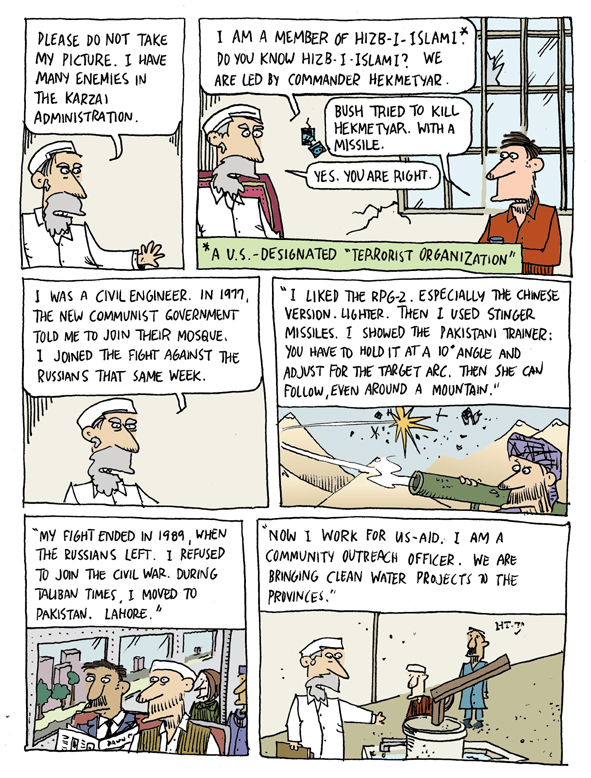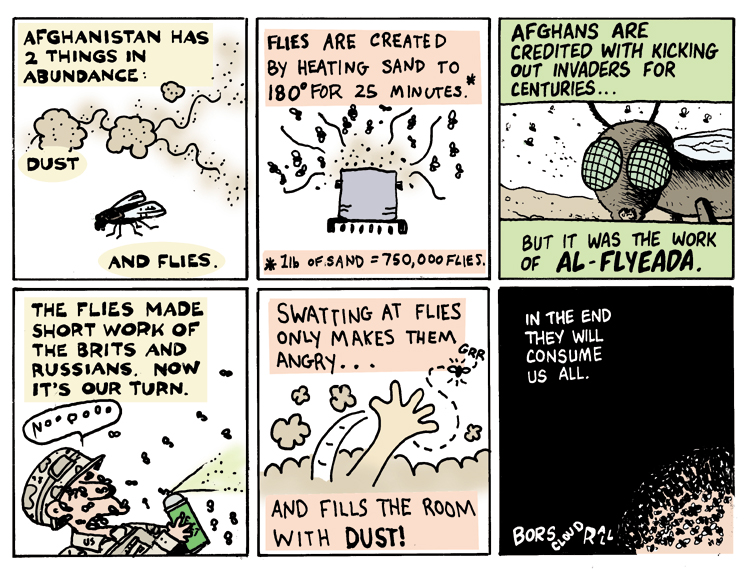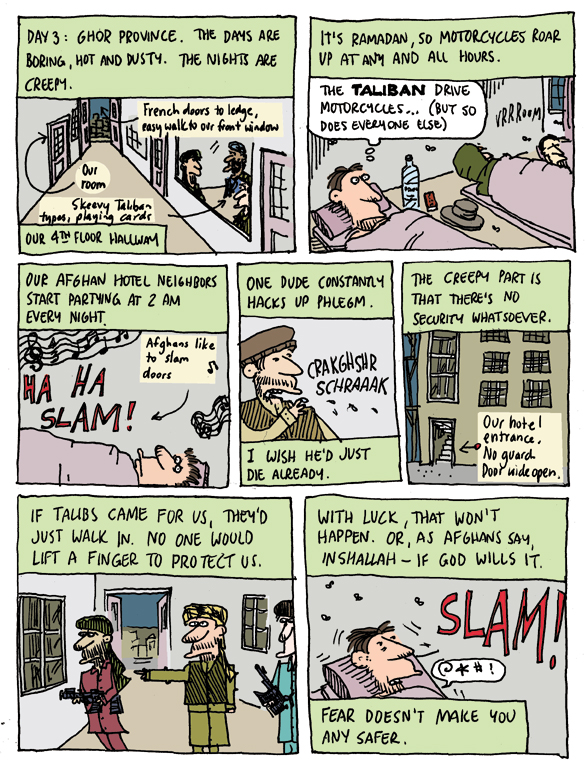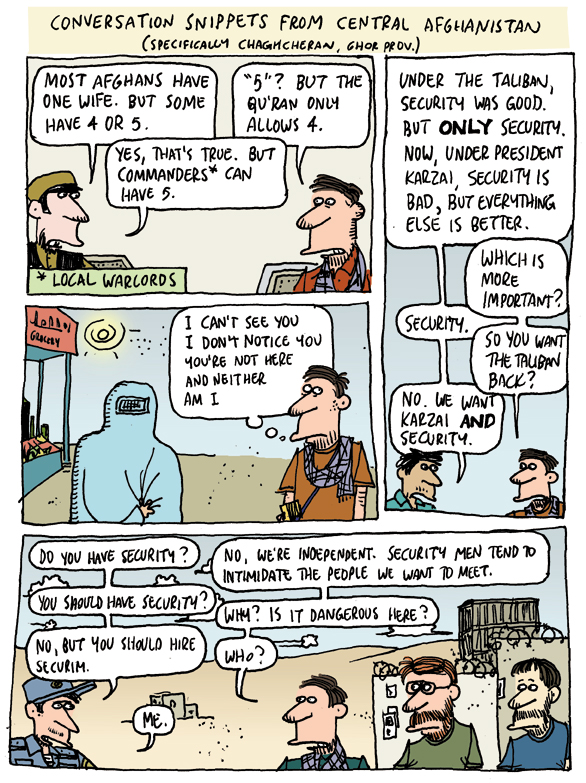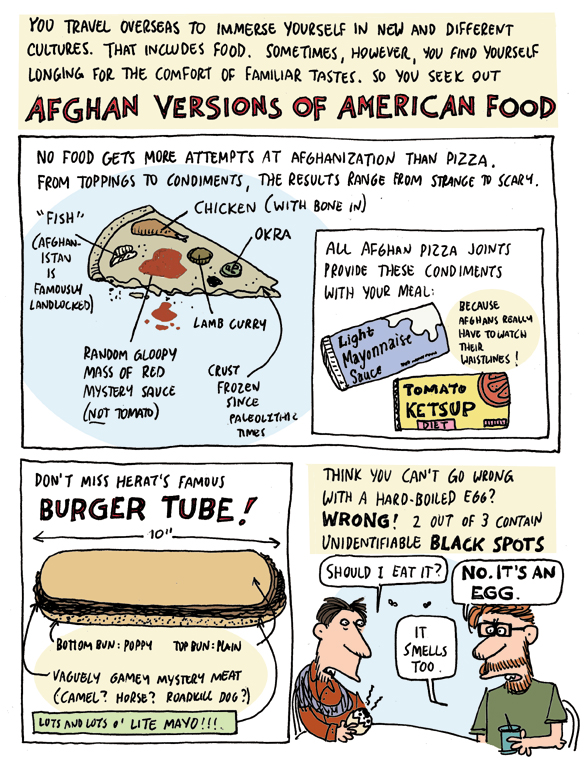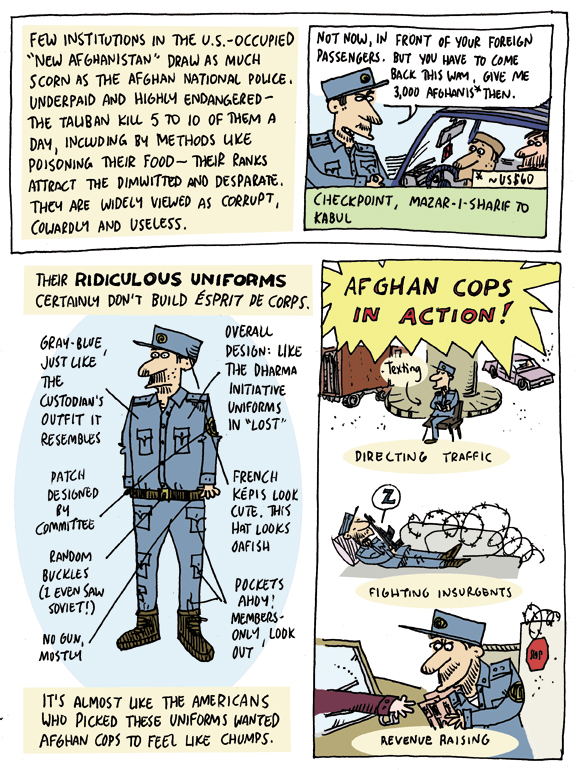Click the cover to order from Amazon or, better yet, ask your friendly neighborhood bookstore for it:
Silly Moderates
There’s a NYT Book Review piece today that contains this nugget:
At work, Malcomson struggles to make sense of his country’s new imperial tenor, inviting seasoned policy makers like George Shultz, Richard Holbrooke and James Baker to submit opinion pieces that he hopes will calm the national appetite for war. Ultimately frustrated that the White House has engineered an invasion of Iraq with little evidence and almost no debate, Malcomson quits journalism and goes to work for the United Nations, hopeful that he can roll up his sleeves and at last really do something.
The Malcolmson in question was an Op/Ed editor at the Times.
Here is a succinct summary of why, in a nation without a leftist party, moderates serve only to enable the Right. What moderates like Malcolmson don’t get is that you don’t counter right-wing arguments like Bush’s drive to invade Iraq with “reasonable” conservatives. You counter them with aggressive left-wing counterarguments.
By the way: The Anti-American Manifesto arrives in stores this week. And it looks great.
“Anti-American” Book Tour Kicks Off Tomorrow in NYC
“The Anti-American Manifesto” book tour kicks off tomorrow, Saturday, September 11th at the Brooklyn Book Festival. I’ll be part of a panel discussion called “Genre Busters,” alongside Lizzie Skurnick, Rebecca Rogers Maher and Mike Edison.
If you’re in NYC, this will be your first chance to pick up a copy of the new book.
It’s at:
The Adam Frank Studio
203 Columbia Street (between Sackett and DeGraw)
Brooklyn, NY
(Take the F or G train to Carroll Street)
Event begins 8:00 pm
SYNDICATED COLUMN: Revolution B Gon
America Faces Permanent Unemployment
SOMEWHERE IN AFGHANISTAN–It has been two years since the U.S. economy, once the envy of the world, drew its last breath. Millions of homeowners have gotten evicted. Unemployment has soared to Great Depression-era levels. Yet, aside from the witless “take America back” rants of the Tea Party crazies, things are calm. Remarkably so, when you consider the misery and rage that is tearing families apart.
The explanation: unemployment benefits. By the time I got laid off as an editor in April 2009, Congress and the Obama Administration had extended checks for the jobless to a record 99 weeks. Another extension was approved in July.
The money isn’t great. In New York, you get $405 a week plus $25 “Obama bucks” per week. But it’s enough to make a difference. If you hustle a little–odd jobs paid in cash, off the books, for example–unemployment makes it possible for many of the 20 percent-plus of Americans who lost their jobs under the Bush-Obama Depression to squeak by.
As usual, the mainstream media is missing the point. They see the debate over extending unemployment as horse-race politics. “As a political matter,” The New York Times reported on July 20th, “the issue has appeal to both parties, especially in an election year in which each party needs first to motivate its own base.” Democrats say they favor more money for the jobless as a matter of sympathy; Republicans say they oppose it because they’re worried about budget deficits.
In reality, unemployment is Revolution B Gon–a stopgap measure to keep the out-of-work at home in front of their TVs rather than out in the streets, breaking things.
Though stupid, Congressional Republicans are well aware of this. They’re playing a dangerous game–all it would take is one Democratic defection in the Senate to end unemployment benefits–but they figure they’ll score political points by voting against measures they really want to see pass.
With employers refusing to hire and the federal government unwilling to enact a broad, people-directed, New Deal-style stimulus, there is little hope that the economy will improve. Now the powers-that-be must face a question:
Are we looking at a future in which a significant portion of the workforce is permanently unemployed?
The answer is almost certainly yes.
If 20 percent-plus of Americans will never be able to find a job, what do we do with them? Do we let them starve? Or do we pay them off?
The obvious solution is to follow the model of 1970s Great Britain, which bought social stability–or at least Revolution B Gon–by providing its permanently un- and underemployed working classes with a generous array of social benefits.
Margaret Thatcher’s England refused to invest in the economy. But it feared riots and other social upheavals. So its “dole” included weekly checks as well as subsidized housing.
Did the UK’s dole, as Republicans allege about unemployment benefits in the U.S. today, encourage idleness? By most accounts, yes. Oral histories of the punk rock movement laughingly describe how the dole unwittingly subsidized one-chord wonder band members while they worked on their music and tried to land record deals. The broader point, however, is that it did not increase unemployment. England in 1977 couldn’t create enough jobs for those who wanted them. If anything, it was good that some kids preferred to hang out in squats.
Personally, I think the current American political and economic system is so corrupt and impotent that the best solution is to overthrow it and start from scratch. So, on some level, I hope our excuses for leaders commit political suicide by allowing unemployment benefits to lapse. Tens of millions of dispossessed Americans will lead us into a better future.
If I were one of them, however, I would copy the Thatcherite example. Pay people not to work. Otherwise it’ll be 1968 all over again.
(Ted Rall is in Afghanistan to cover the war and research a book. He is the author of “The Anti-American Manifesto,” which will be published in September by Seven Stories Press. His website is tedrall.com.)


